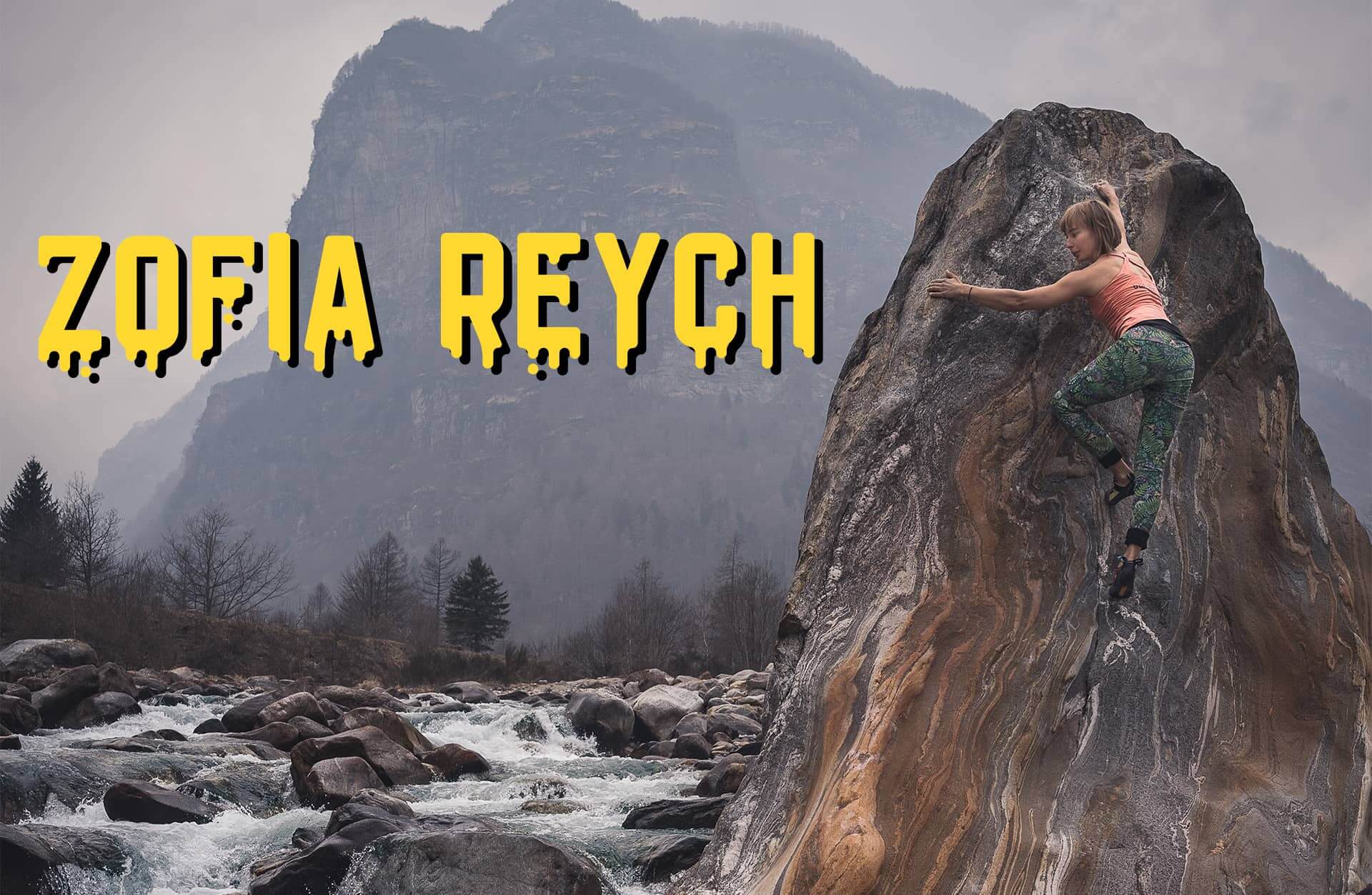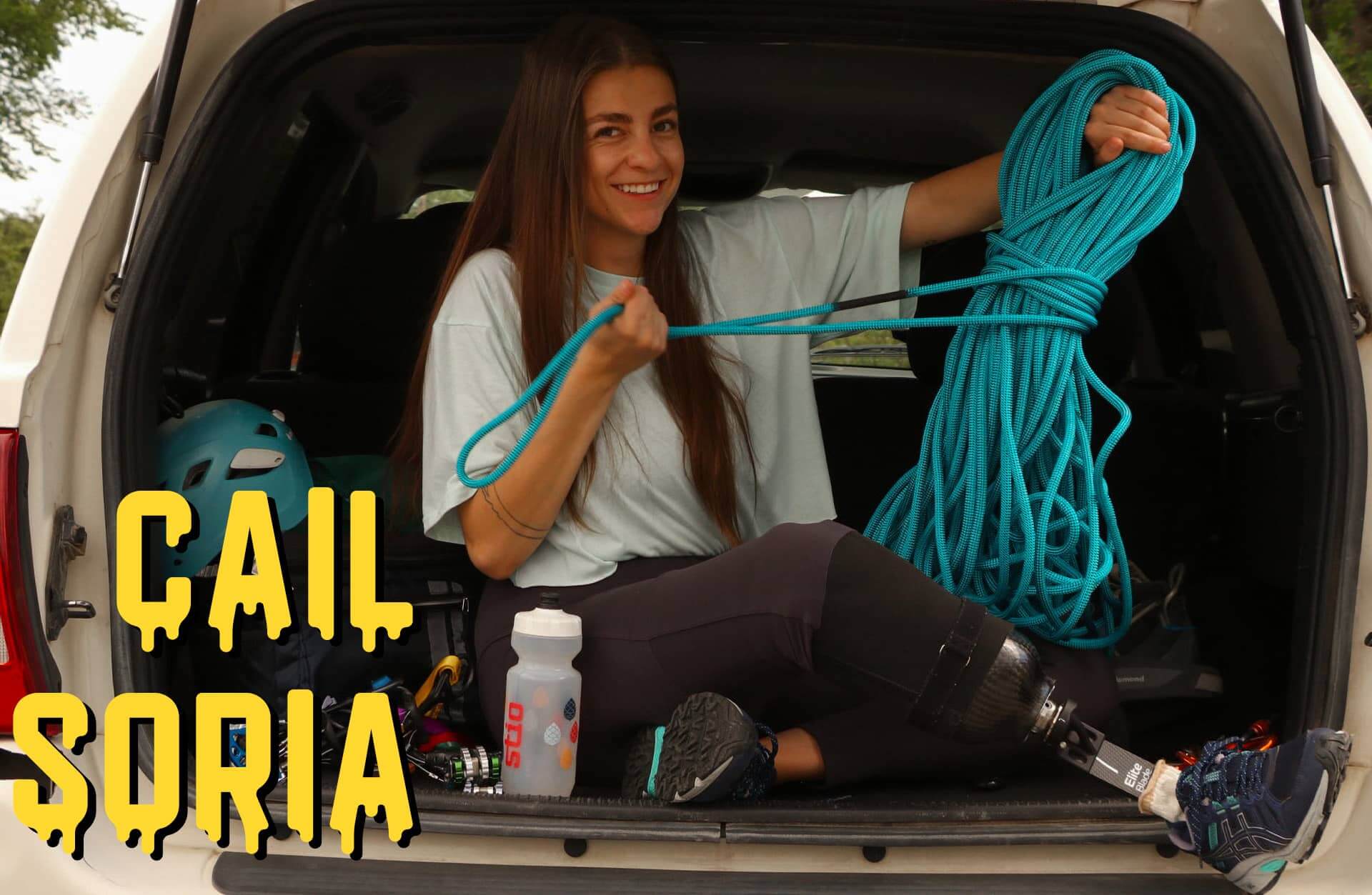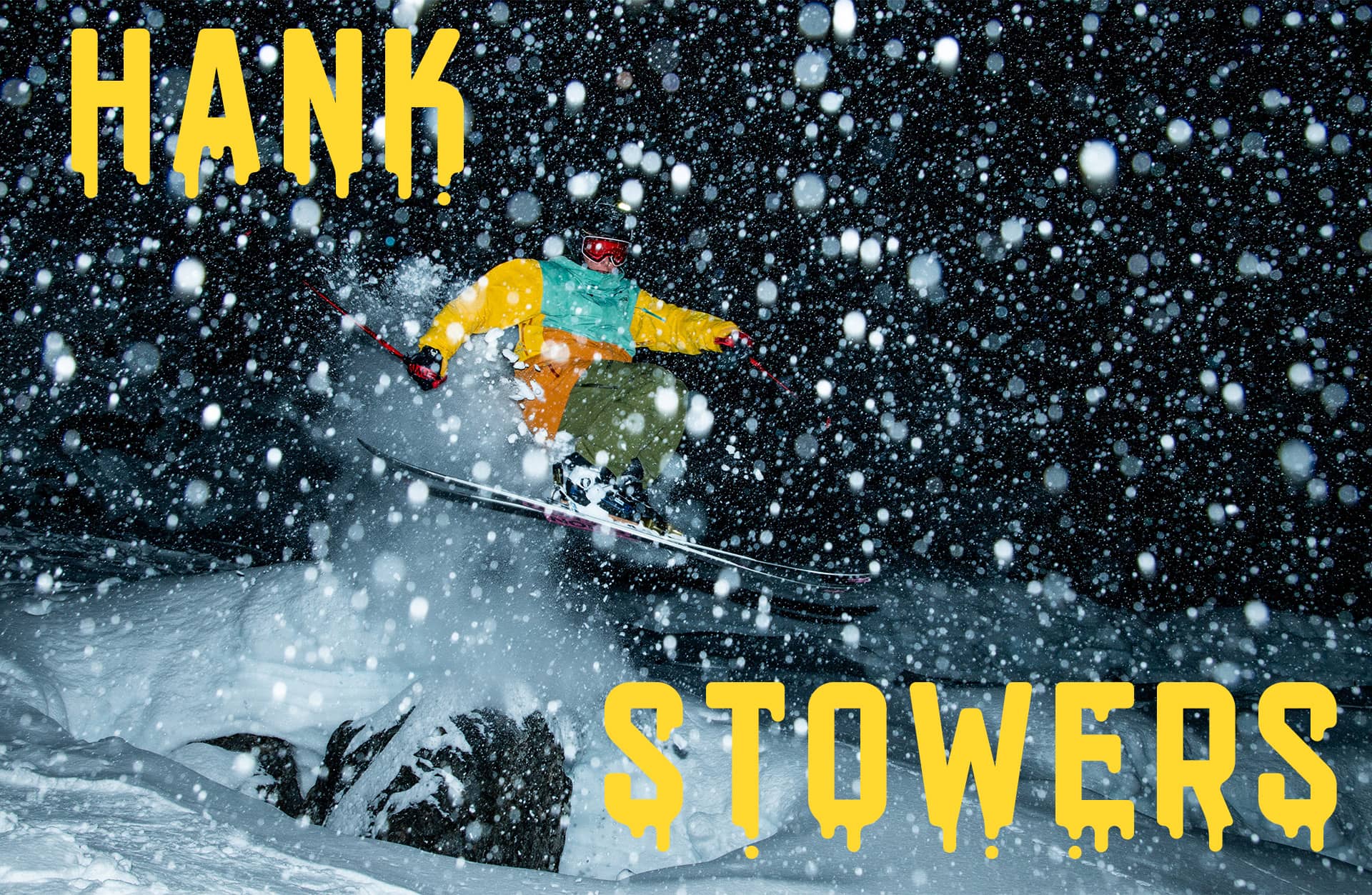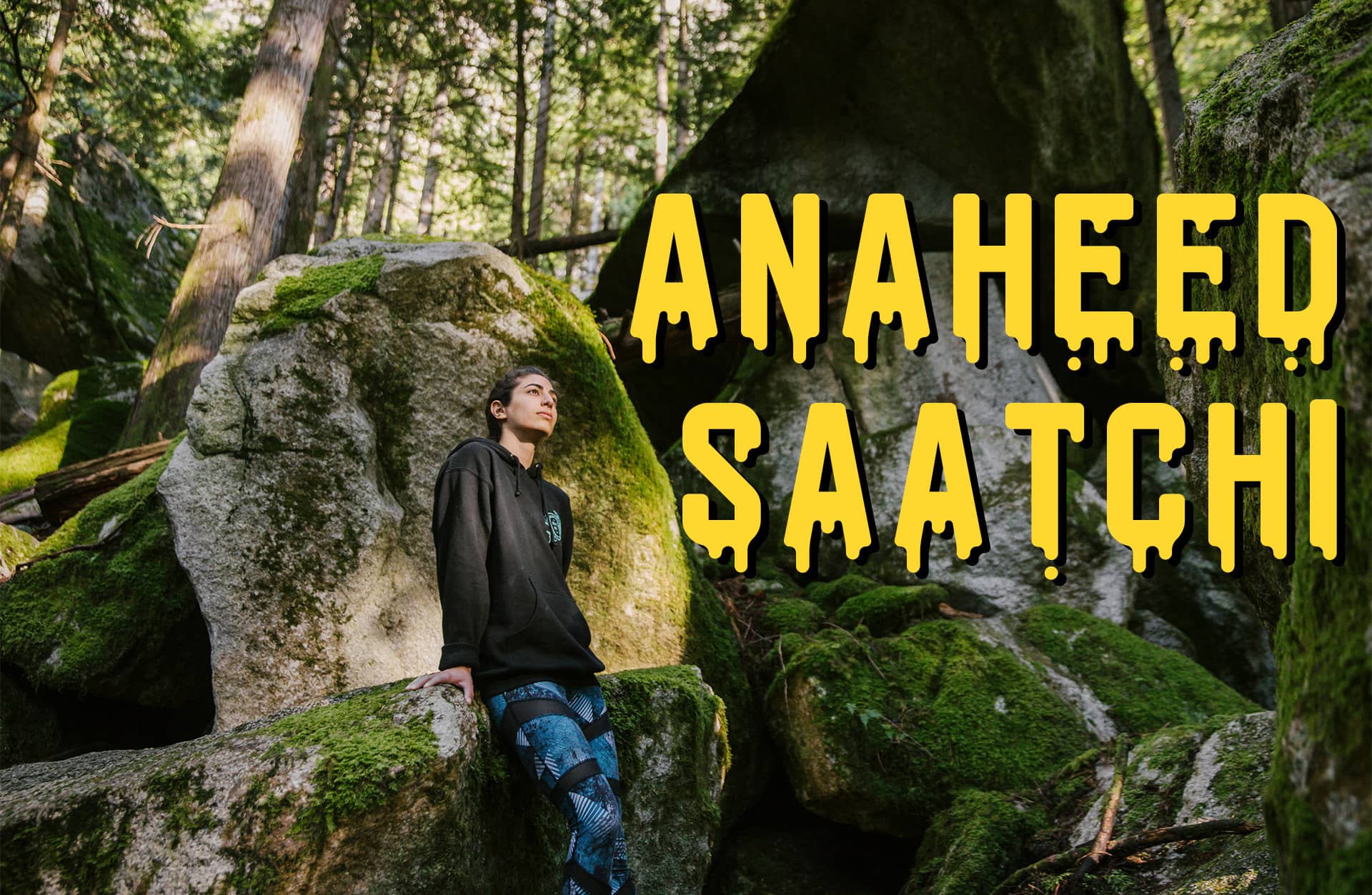CLIMB // 01 MAR 2023
BORN TO CLIMB: FROM ROCK CLIMBING PIONEERS TO OLYMPIC ATHLETES
As soon as they were able to toddle, author Zofia Reych was out on the trails. Born in Warsaw, Poland to a mother with an insatiable love of hiking, Reych’s early childhood memories are filled with picturesque vignettes of the High Tatras. It was during these years, hiking beneath the spruce and pine, that Reych caught their first glimpse of the elusive Polish climbing community, sparking a lifelong fascination. “As soon as I realized that you can get off the trails, I was like, I want to do this,” smiled Reych.
Moving from the trail to the wall was not a simple process in early 2000’s Poland. In order to climb independently outdoors, and specifically within the High Tatras, climbers had to complete two multi-day courses to receive the subsequent climbing licenses. Without these licenses, climbers were at risk of a hefty fine. So, when a school friend revealed that her father was a climber and planned to take the beginner course, Reych jumped at the chance to join in. “That was already cool, that there were those courses,” said Reych. “But at first you really felt that you were a punter. You really were a novice and had to be initiated, it took a while.”
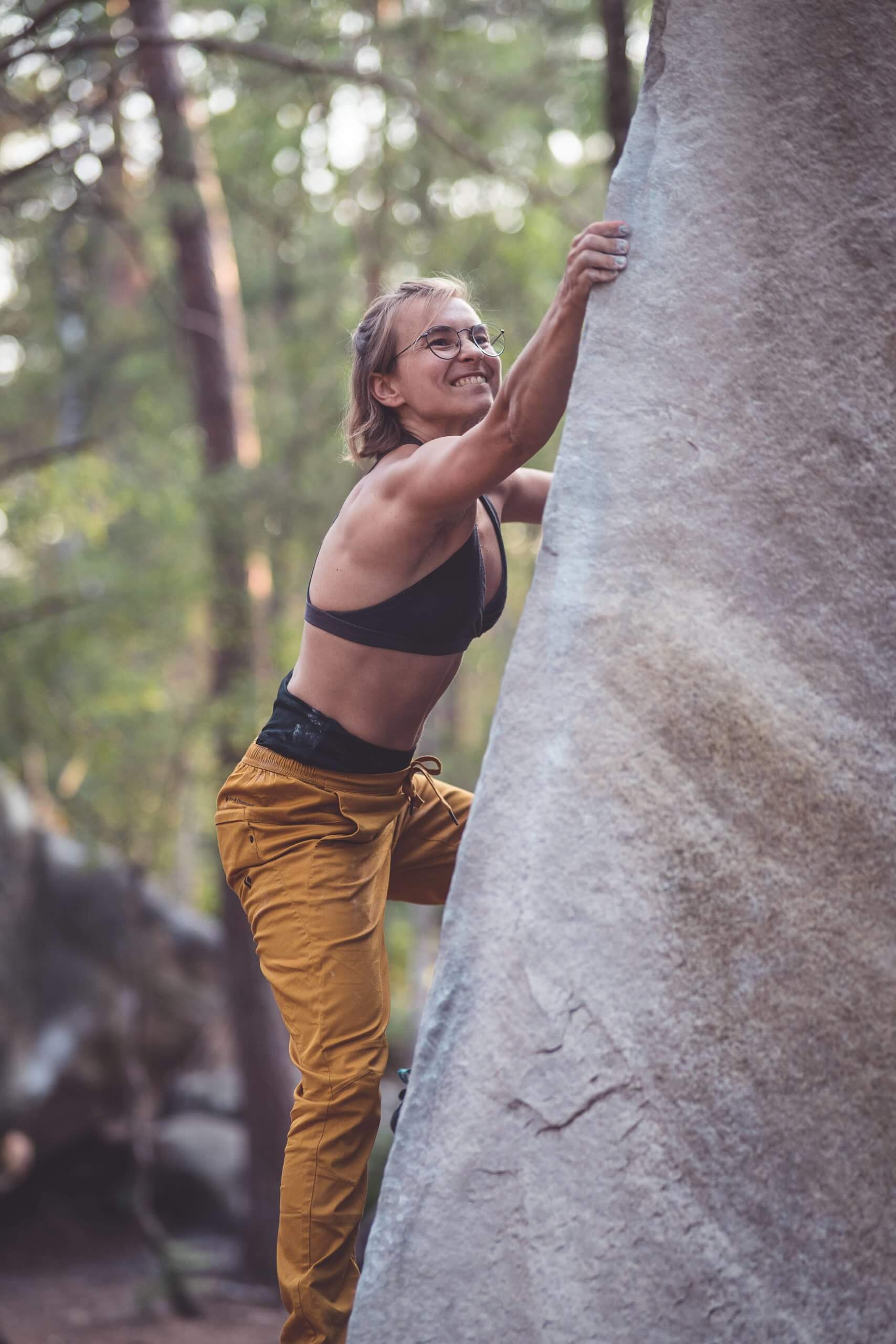
Luckily there were a few inner city walls where Reych was able to hone their skills between courses and climbing trips. “There is this concrete or stone wall bordering this high speed freeway to protect it,” explained Reych. “People would traverse and boulder on these walls. It was called the Lead Wall because you would inhale so much lead while climbing.”
Fueled by a determination born from passion, Reych continued to immerse themself into the climbing community through their teens and early 20’s. Unaware of their gender identity at the time, Reych navigated the world of climbing as a young woman, and quickly discovered the struggles that came with that, enduring what they now recognize as sexist remarks within their first climbing course. “There was no diversity in the community,” explained Reych. “We’re not even talking here about ethnic diversity back home because there were simply no other people than white people [in Warsaw]. Then, when it comes to gender, it was a very macho environment, and it wasn’t discussed, it wasn’t questioned. It was just the way it was. I didn’t question it myself. I just felt like something wasn’t right, something wasn’t clicking. It was a bit weird and hostile, but I didn’t know why.”
It wasn’t until they began their Master’s in anthropology that the pieces began to slide into place. Diving into feminist and gender studies, Reych’s view of climbing switched to a different lens. “I realized, oh, actually climbing is a pretty masculinized discipline,” explained Reych. “I studied that for my thesis.”
This discrepancy in the climbing community became even more clear when Reych moved to the bouldering mecca Fontainebleau. Reych explained, “It really slapped me in the face because before I didn’t think about it at all, and suddenly I saw it and I was like, well, we got to do something because this ain’t right.” So, Reych became the director of the Women’s Bouldering Festival.
Founded in 2018, the inaugural event featured several workshops and speakers. Nearly a hundred women from all around the world attended, flipping the gender dynamics at some of the most iconic bouldering locations in the world. “At first it was very much only about women for me and then with time, as I discovered my own gender nonconformity, I realized, okay, again, this is something that is problematic within climbing.”
Though met with some initial resistance from the French climbing community, the event was a success and in 2019 Reych was joined by a small group of volunteers to make the event bigger and better. Going into the 2020 season, the team was excited to use their two years of experience to host the best festival yet. Unfortunately, as with most events in 2020, plans shifted and the Women’s Bouldering Festival down-sized into a much smaller, socially distanced event.
At the start of the pandemic, Reych and their partner had just moved into a dilapidated farmhouse near the forest of Fontainebleau. So, when the Forest was shut down, cutting Reych off from climbing, they began to knock down walls, plumb toilets, and lay tiles through their new home. However, with stores shut down, building supplies eventually ran out. Left with no festival to run and unable to renovate further, Reych needed a new project. So, they wrote a book.
“I learned to write and read when I was three years old, and pretty much immediately I wanted to write books,” smiled Reych. “I stitched together pieces of paper and pretended in my four year old mind that I was publishing books at home. Making little bound booklets for my mom and my grandma.”
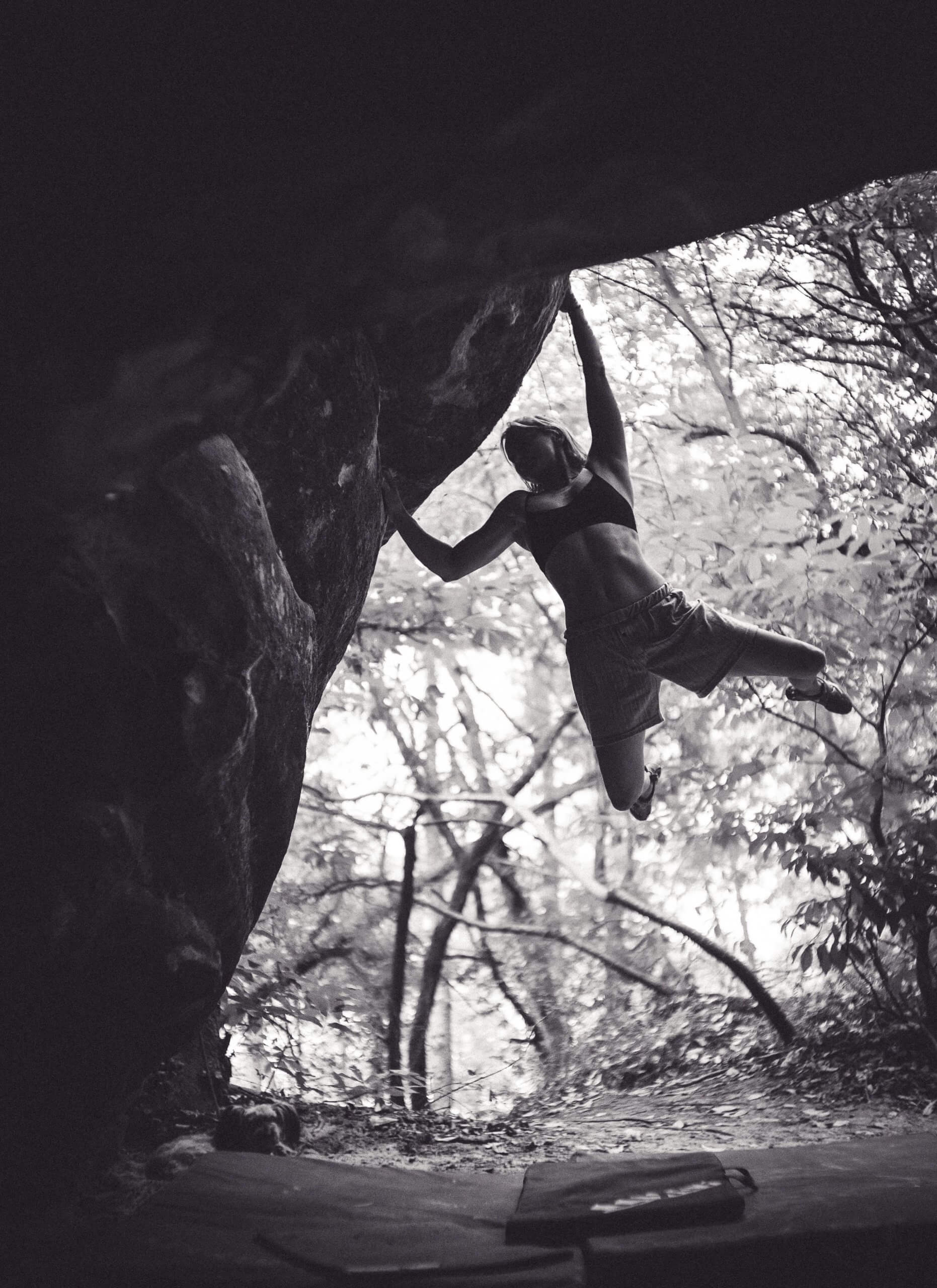
Though the desire was there, Reych never seemed to have the right subject matter. Half written chapters and hastily scribbled ideas drifted through the years until one day, they crystallized into Born to Climb: From Rock Climbing Pioneers to Olympic Athletes. Idea in hand, Reych charged forward, ready to dive deep into the world of words. “Writing is such a struggle. It’s such a torturous process. And I like torturous processes,” laughed Reych. “I love training for climbing and making myself super tired. I love projecting super hard projects. I equally love sitting at my computer and typing for hours at a time and editing and swapping things around and being like, what comes next? Or obsessing over wording. It just makes me happy.”
Born to Climb takes the reader on a journey through the history of climbing, from the daring pursuits of noble men at the end of the Middle Ages to modern day Olympic competitions. However, as Reych states in the foreword, “…timelines and chronicles rarely make for good reads, and history, although it claims to deal only in facts, tends to be more of a construct than an exact science. I’d rather throw the notion of an objective truth right out of the window and offer the reader a story instead.”
Transporting the reader across several generations of climbing, Reych pairs some of the more well-known pieces of the sport’s history, such as Royal Robbins versus Warren Harding, with some lesser known figures. One example being queer mountaineer Geoffrey Winthrop Young. By balancing the known with the unknown, Reych’s novel works to push out of the storytelling rut that a majority of historical climbing media has fallen into. “We love what’s iconic. We love what we know, and there is no point in discrediting it,” they explained. “I love retelling the stories. We need frameworks. History is so complicated, if we wanted to tell what actually happened, it’s impossible. We need storytelling, which by default is cherry picking. And it’s beautiful! That’s what humans do. That’s why the book has got both. My idea was to bring the iconic and the underrepresented together.”
While shedding light of some of the lesser known points of climbing history, Reych’s book differs from the majority of climbing media in one key way. It wasn’t written by a man. “There are so many accounts already out there which are very skewed toward the male point of view. Even a few books that were recently published, where you read them and the same shockingly sexist things come up over and over again,” explained Reych. “First of all, you’ve got a whole book about males. Then, so much of it is just about one country. When you get a woman, the first thing they say is that she was really hot and you’re just like, what? That bias made me realize how much we see things through our own lens.”
As a nonbinary climber born in Poland before the fall of the Berlin wall, Reych’s lens strays just a little from the norm. Interspersed between the book’s slices of history are excerpts from Reych’s journal over the years. These personal vignettes help ground the reader, bringing climbing from a macro scale down to the micro. Immersed in Reych’s trials and tribulations, the countless pursuits of climbing throughout history become more relatable, and more human.
“In a lot of the stories that I tell about myself, I frame myself as a woman because I was acting as a woman, because I hadn’t yet transitioned. My experience was the experience of a person perceived by the society as a woman,” explained Reych. “I wrote a lot of those personal stories sort of as they were happening. I decided to put them in because I really like this brand of writing in which the author is putting themselves in to explain to the reader where they’re coming from, to explain to the reader their perspective. It’s something that comes from my background in anthropology. At some point anthropologists realized that it is impossible to remove yourself as the research tool. It’s the same when it comes to nonfiction reportage, when you’re a journalist, it’s impossible to tell an objective truth. You’re not telling what happened, you’re telling what you’ve seen. You’re telling how you saw it. So, by revealing yourself to your reader, you’re revealing the internal workings of the lens, so to speak.”
There were of course some critics that were disappointed that Born to Climb was not a greatest hits album of climbing history. “I got a very unsatisfactory critique which basically revolved around there are not enough American people in this book,” said Reych. “Okay, maybe my view is very Eurocentric, but why don’t I get to be Eurocentric? At least I tried to be Eurocentric in the sense of infusing the book with a little bit of what was going on on the east side of the Berlin wall. Because for me, that is my lens. Also, if I were to put more American history in there, I would not retell the stories that are already told over and over again in the American Alpine Club. I would focus more on the story of stealing the land from its native inhabitants, the story that’s not being told in outdoor sports.”
Going into the research stage of writing Born to Climb, Reych had a notion of what the history of climbing entailed. However, as they sifted through memoirs, biographies and other historical accounts, a cycle began to emerge. Climbing was, from the start, a sport for white privileged males. These privileged individuals felt obligated to uphold traditions surrounding the sport, which meant that new ideas and techniques were villainized. Especially since these new approaches were typically introduced by individuals of commonality. “People, especially in the UK, would say, climbing is a working class pursuit. [When in reality] these individuals were the exceptions,” explained Reych. “These individuals were trailblazing. They were breaking the mold and they remade it, but they were not a regular [occurrence]. Even if climbing back then became more working class, it was still such a process of breaking through.”
It is well known that history is created by those who write it, and climbing is no different. With a majority of primary sources written by men for men, it would be easy to believe that not a single woman touched rocks until Lynn Hill stunned the climbing world at Yosemite. This is of course not the case, as Reych explained, “This bias in sources is largely not due to the fact that there were no women rock climbing or mountaineering. But those who were doing it, didn’t produce accounts because it was incredible enough for them to actually find the time and opportunity and metal to go out there. A vast majority didn’t have the opportunity and time for it to occur to them to produce an article about it.”
While these biases can be frustrating, this blindspot in documentation can also be seen as a passage to possibility. “Myself as a nonbinary person, I’m like, oh, I’m sure there were trans people in the [climbing] community,” said Reych. “It’s just that trans, gender nonconforming, it wasn’t a thing. How many of those who were in the community were queer? How many were gender nonconforming? We will never know because it wasn’t a thing. This is something that’s true for climbing, but also for any other disciplines.”
Coming out on the other side of the writing process, Reych’s own perspective on climbing shifted. Historical context changed their external view on climbing, seeing how the sport’s foundations built to the current industry. But there was an internal shift as well. A change in how Reych related to their personal climbing practice. “I was super focused on personal achievement before and then when I took on the book project, I ended up being forced to give up my training a little bit just because the sheer amount of work on the book took me by surprise,” explained Reych. “It was the first time in many, many, many years that I stopped obsessing about training and pushing my grade and so on. That obsession with performance wasn’t a positive one. It was coming from a place of negativity. Then [post writing], without that aspect of performance obsession, I was lost. [I asked myself], why am I climbing? Why am I doing this? And I realized, well, I’m doing this because it’s nice. It really doesn’t matter whether I climb V10 or V11. I’m doing it because it’s pleasant.”
Empowered by a new training mindset that prioritizes total well-being over optimization, Reych looks forward to setting to work on an array of projects, including continued renovations on their now less bedraggled farmhouse. “I am trying to bring it back to life and make it usable because it’s still like six degrees Celsius in the kitchen in winter. It’s down jacket weather indoors,” laughed Reych. “But I’m making a home for myself and my partkern, and it feels nice.”
They continued, “I’m writing a historical fiction novel in Polish. I’m writing in Polish because I wanted to just be able to let my creativity loose. Funnily enough, I have to also get back into writing in Polish because I’ve been working on my writing in English for such a long time that the Polish is a bit clunky, but it is still my first language and I still feel much more connected to it and much more flexible with it.”
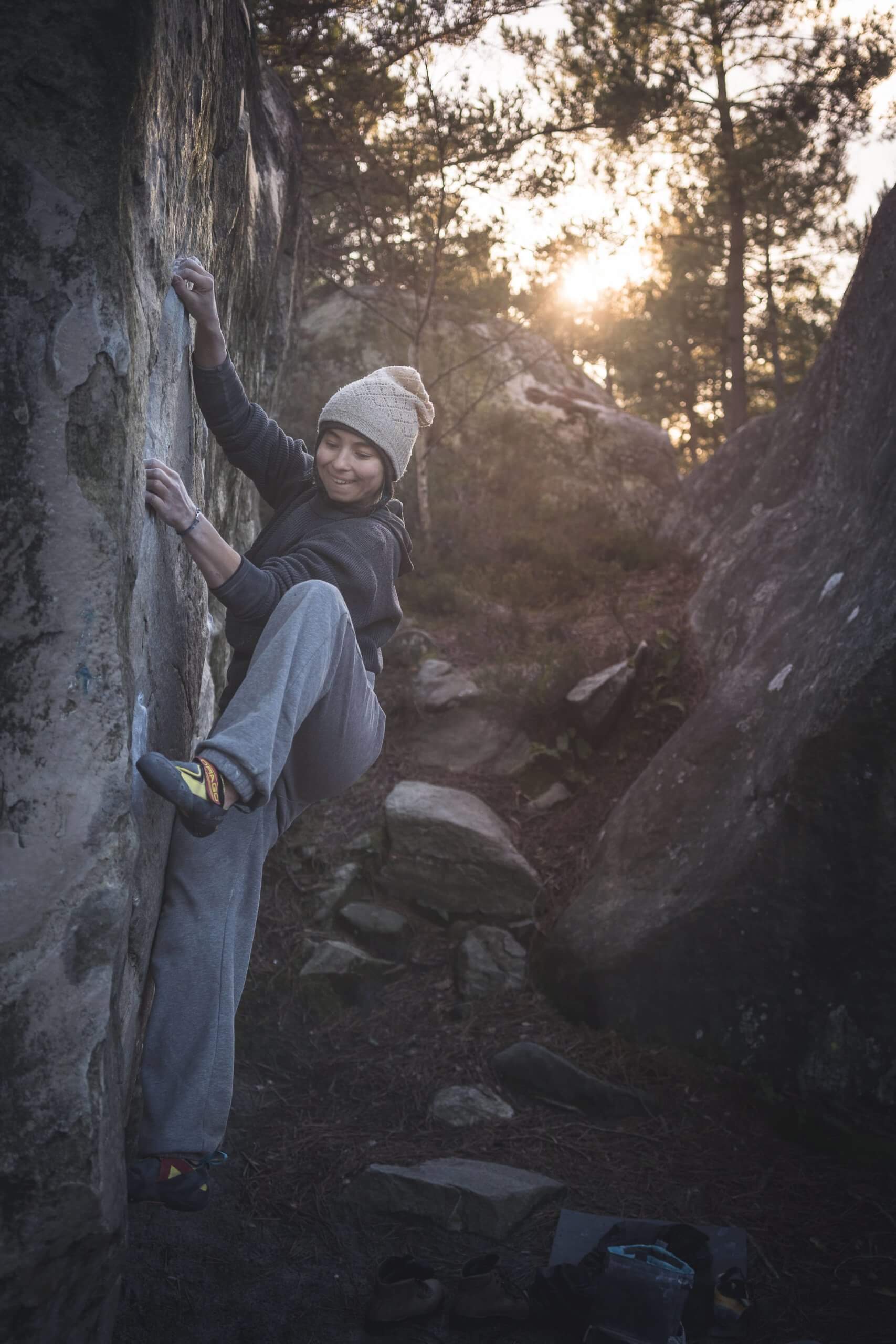
“There is planning the Women’s Bouldering Festival, there is the new book. I started a Patreon account to make my writing financially sustainable,” said Reych. “I want to climb a lot outside, but without putting any pressure on myself. Basically, I just want to feel good and live my life in a way that’s providing me with satisfaction on every single plane. That involves both being good to myself, being good to others, and doing what I perceive as the right thing.”
“So, I suppose finding balance is my biggest goal. Very vague and very not sexy,” they laughed.
There are many lessons Reych hopes readers will take away from Born to Climb. However the crux of Reych’s teachings is that the rules used to define climbing are in a constant state of flux and climbers are free to look outside the boxes presented to them. “It’s super important for me that people realize that the expectations and narratives that you’re presented with within your climbing community are very arbitrary,” explained Reych. “While it’s awesome to cultivate those traditions, ethics, and to play the game as it was sort of conceptualized, you have to realize that this is only a game and ultimately it’s about your experience and however you want to experience climbing. There is no obligation to do things in one way or another.”
They smiled, “Climbing can be whatever you want it to be for you and then that can be extrapolated to the way you do life. There is no one way to be a climber and there is no one way to be human.”
